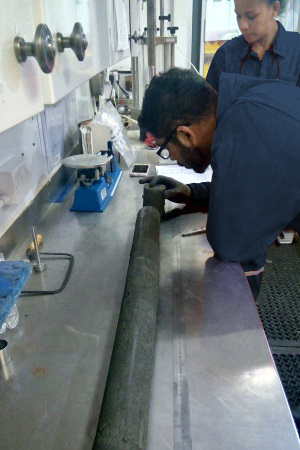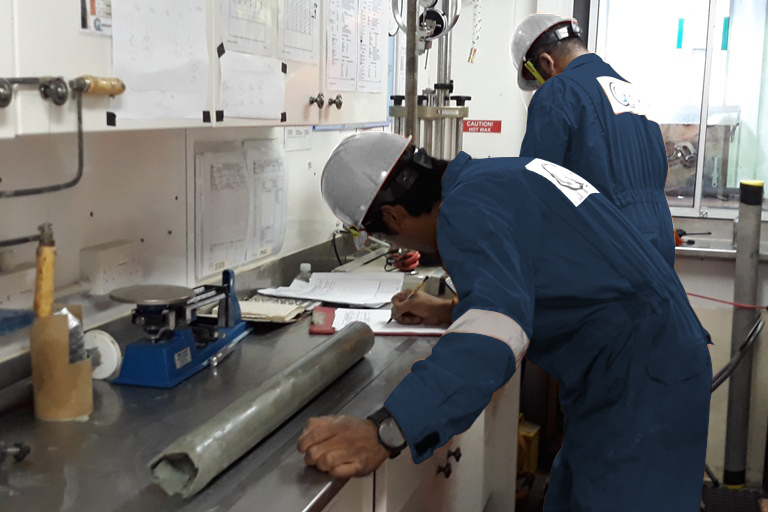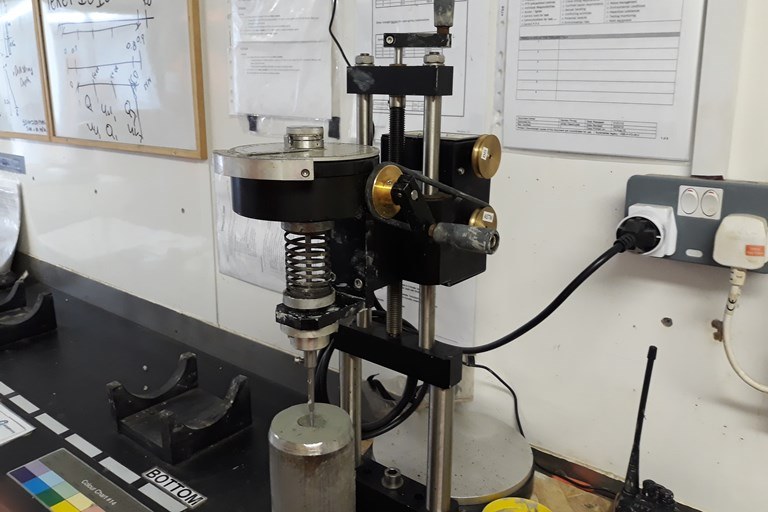OFFSHORE LABORATORY

REAL-TIME ENGINEERING FIELDWORK
As part of your geotechnical site investigation program, Geoquip Marine provides an offshore laboratory, that supports engineering analysis conducted during field operations, giving you real-time information.
Our containerised laboratories installed on our vessels allow technicians and geotechnical engineers to immediately determine soil classification and strength parameters for use in:
- engineering and pile design;
- jack-up spudcan penetration analyses;
- pipeline route assessments;
- dredging applications;
all conducted offshore during fieldwork operations.

ON-BOARD TEST EQUIPMENT

Our offshore laboratories are equipped with the necessary tools to conduct standard soil and rock tests, including:
- Triaxial test apparatus.
- Miniature laboratory vane.
- Hydraulic extruder.
- Two soil drying ovens.
- Torvanes.
- Pocket penetrometers.
- Point load test machine.
- Soil lathe.
- Sample digital camera.
SAMPLE TESTING CAPABILITIES
In the soils laboratory, routine sample handling, photography, classification and storage are performed in addition to the following test types:
- Geotechnical visual/field description to BS or ASTM Standard.
- Unconsolidated undrained triaxial tests; undisturbed and remoulded results.
- Water content.
- Bulk and dry density.
- Qualitative carbonate content.
- IS50 measurement.
- Subsampling and conditioning for further onshore testing.
SAMPLE STORAGE
Samples recovered from the sub-seabed are stored in a temperature-controlled environment prior to shipment to an onshore laboratory where further analysis is conducted.

